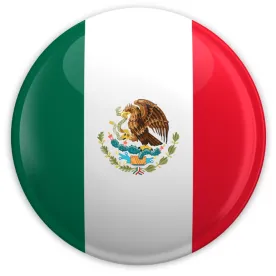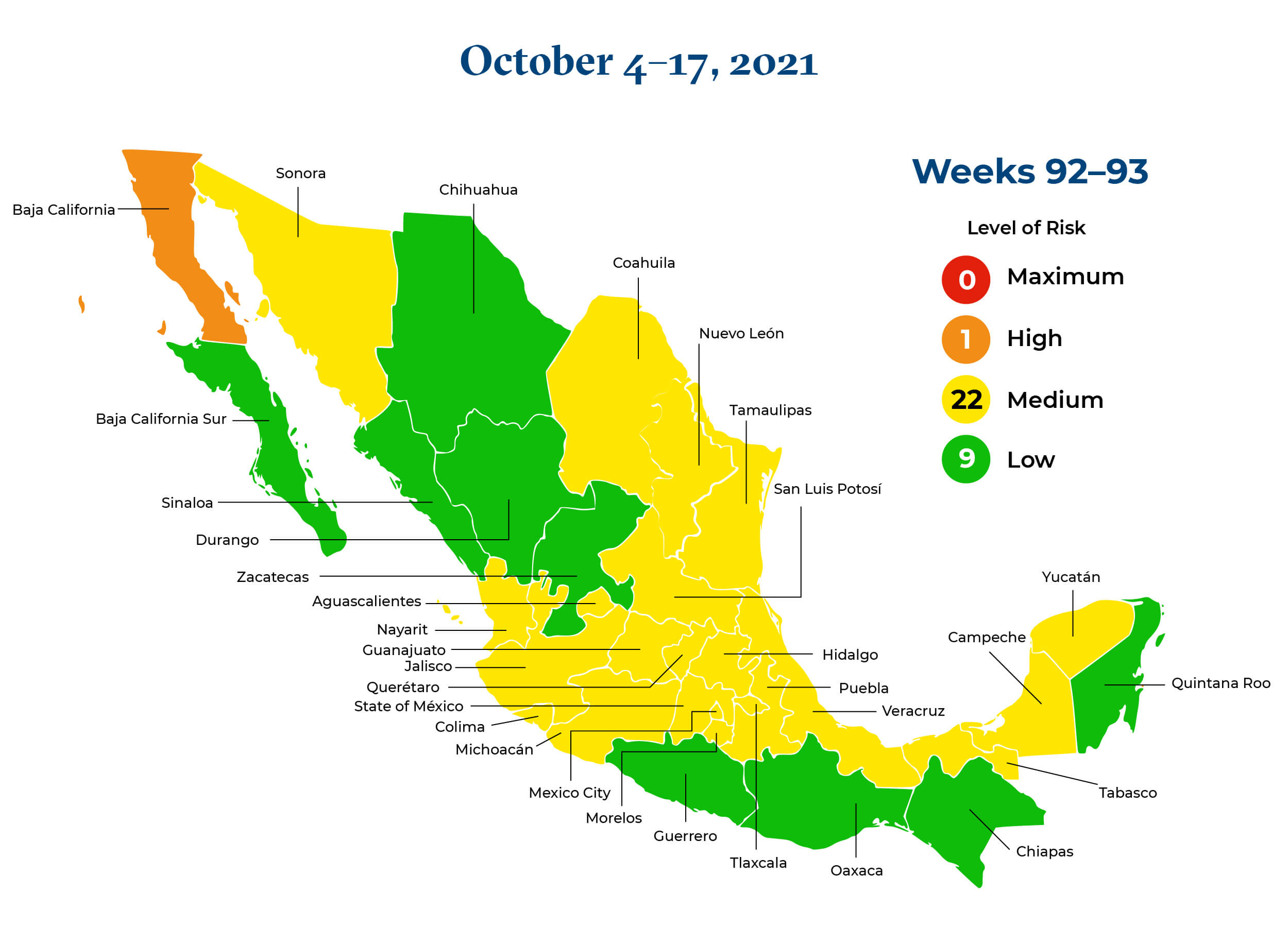The third wave of the COVID-19 pandemic in Mexico has ebbed significantly in the last few weeks—enough for the federal government to lift all restrictions on social and business activities in nine states. Under Mexico’s four-tiered COVID-19 Traffic Light Monitoring System, those nine states are in “green light” status, the only restriction-free status. Because the pandemic is ongoing, Mexico’s health authorities have continued to urge the population to reduce the risk of infection by complying with government guidelines to prevent the further spread of the virus.
The color-coded system, which is updated every other week, was introduced in June 2020 and is used to alert residents to the epidemiological risks of COVID-19 and to provide guidance on restrictions on certain activities in each of the country’s states.
Signs that the pandemic in Mexico is waning are showing up elsewhere as well, with 22 states at yellow traffic light status (all activities permitted with precautionary measures to prevent infection among high-risk individuals), and only 1 state—Baja California—at orange status (high-risk areas). No state is operating under red traffic light status (only essential activities permitted).
The federal government has reported that as of October 6, 2021, nearly three-quarters (72 percent) of the nation’s residents 18 years of age or older have been vaccinated against COVID-19. However, the federal government has not clarified the percentage of people with complete vaccination schedules.
Below is a map for the period of October 4–17, 2021, indicating the COVID-19 risk level in each of the states and the capital.
This chart presents the traffic light status of each state, and, as applicable, variations between federal and local traffic light statuses based on publications of the federal Ministry of Health and status reports provided by each state. Some of the states may assign a different traffic light status either statewide or by region, issue updates more frequently, or otherwise modify the federal traffic light system. Baja California, for example, has designated itself in yellow status, rather than the federally designated orange status. Its neighbor to the south, Baja California Sur, is considered by the federal government to be in green status, but it is taking a more cautious approach by designating Comondú and Loreto in orange status, and Mulegé, La Paz, and Los Cabos in yellow status.
The federal government has also highlighted the states with the “most visited destinations in Mexico.”
Mexico City Remains at Yellow Traffic Light Status
Mexico City—in whose metropolitan area nearly one-fifth of the nation’s population lives—remains in yellow status, where it has been since late June 2021, according to the Mexico City Monitoring Committee. The committee has also determined that private corporate offices may operate with a maximum capacity of 80 percent of their workforces in compliance with Mexico City’s industry-specific health protection guidelines. The guidelines require employers to administer at their own expense, and on a weekly basis, rapid antigen tests or reverse transcription-polymerase chain reaction (RT-PCR) tests for the detection of the SARS-CoV-2 virus, to at least 20 percent of the personnel attending work on-site.
Finally, the Administrative Verification Institute, along with other Mexico City government authorities, will continue to visit businesses to verify compliance with the general and specific sanitary measures for health protection in workplaces. The authorities may levy fines against employers found to be non-compliant with the health and safety measures. Noncompliant employers may also be subject to the total or partial temporary suspension of work centers for up to 15 calendar days. Noncompliant employers may also be subject to other applicable sanctions.





 />i
/>i


